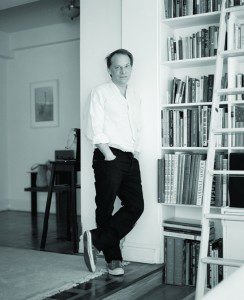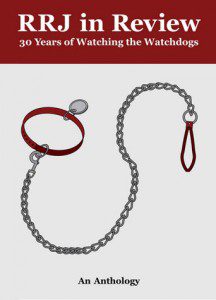Classic Gopnik
Why he aspires to be the “rococo, Jewish, city-bound, Canadian E.B. White.”
And so, after five years in France, it came time for Adam Gopnik to leave. As The New Yorker‘s Paris correspondent, he’d covered the trial of a former secretary-general for complicity in war crimes during the Nazi occupation and the media circus that ensued (“a kind of O.J. trial, without television or a glove”). He’d spoken with chefs on the state of haute cuisine and watched the city shut down as mailmen and metro workers went on strike. His journalism was good, but his personal essays on foreign culture—the comedies of difference between Paris and New York City life—were especially well received.
The local gym was a far cry from its American counterpart, it turned out. A single weekly visit was considered disciplined. In “The Rookie,” he’d tried to explain baseball to his son, Luke—there were, understandably, few local teams—mythologizing its rules and rivalries for added amusement. And in a recurring Gopnik theme, he would visit Luxembourg Gardens, with its carousels and puppet shows, relics of old-world living. “You grasp more of French life by seeing how they birth a baby than by following election returns,” he explained. Paris to the Moon, a collection from his five-year correspondence, is now an international bestseller.
But in 2000, it was time to go home. He and his wife had a newborn daughter, and the couple wanted to send their son to a New York school. Meanwhile, Gopnik had grown wary of repeating himself. “Your readers know it even if they can’t put their finger on what it is,” he says. “The moment I thought self-consciously about how I would engineer a little comedy of difference”—learning how to drive, for example—”that’s shtick.”
When the 55-year-old author and essayist writes about himself, he’s not really the subject. We don’t read Adam Gopnik to hear about him, but to hear from him—what he thinks and how the world looks through his eyes. His comic sentimental essays are not merely inward-looking observations; he avoids self-indulgence in pursuit of a greater truth. He excels at this style of writing—and yet, he is ready to move on. His children are getting older, their experiences no longer his to share. And so he writes about them less. Where he once documented the death of his daughter’s fish or his young son’s linguistic errors, he now draws connections between Darwin and Lincoln instead. And just as he left Paris, in part, fearful of shtick, he’d rather not be typecast as the man who primarily writes about his kids.
In the prime of his career, he no longer hesitates to call himself an essayist, and has set his sights on a higher standard defined by The New Yorker‘s early literary greats—a difficult goal for any writer to achieve. His focus has shifted to grander, more humanist subjects, from information overload to the history of romanticized winter. But in becoming an old-school essayist, there is certainly an element of risk. On the one hand, readers are enthusiastic about long-form writing again in a way that no one could have predicted. Online sites such as Longreads exist for the sole purpose of finding the best in-depth stories on the web. On the other, a declining print industry means smaller budgets and fewer features, things once in abundance for essayists of old. And perhaps most importantly, there is no guarantee that new readers will take to Gopnik’s style, or that it will succeed in any enduring way. But if a classical revival is what Gopnik wants, there might not be a better time than now.
To read the rest of this story, please see our ebook anthology: RRJ in Review: 30 Years of Watching the Watchdogs.
It can be purchased online here.
Matthew Braga was the Senior Online Editor of the Summer 2012 issue of the Ryerson Review of Journalism.












































